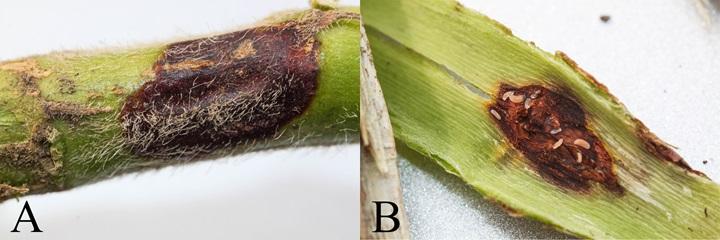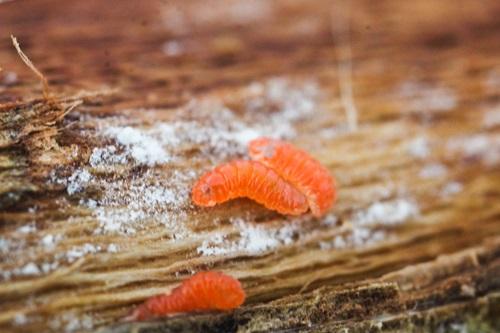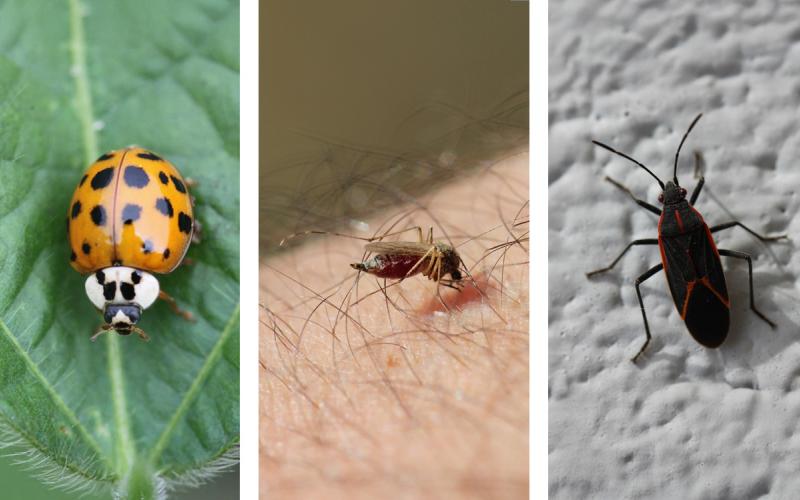Pest Profile
Gall midge larvae were observed recently in soybean stems from a field in South Dakota. These insects were found under the epidermis of the stem that was slightly above the soil line. Generally, the larvae were present under injured areas of the epidermis (Figure 1).


The larvae are very small, and range in color from white to a bright red or orange with the more mature larvae exhibiting the brighter colors. Gall midges are very small flies that are known to be pests of many plants, but in the U.S., there aren’t any reports of them being a soybean pest.
While there are species of gall midges that can be of economic concern in crops other than soybean, there are also some species of gall midges with larvae that primarily feed on decaying organic matter, as well as on fungi and other molds. It is possible that the field conditions (including high winds, moisture, hail) of 2015, in addition to disease conditions, promoted the presence of this insect in soybean.

Soybean diseases observed and identified in the field were stem canker, charcoal rot, pod and stem blight, cercospora leaf blight, and brown spot. There are other root rot pathogens that are suspected to be occurring out in the field but we are awaiting laboratory analysis for confirmation.
The female adult gall midges are attracted to the injured and/or diseased plants, and as a result would have laid eggs near the injured areas. Once the eggs hatch the larvae feed on the decaying organic matter, fungi, or mold near the injured tissue and as a result appear to be infesting the plant (Figure 3).
Management
There were no observations of the larvae feeding directly on the soybean, and the larvae were found only in areas where other infections were present. Because of this, the observed gall midge larvae are not of economic concern for soybean, and treatment is not necessary. Any observed yield loss is likely due to the injury or disease(s) that initially attracted the adult flies.
Reference: Hunt, T., J. Keith, and B. Wright. 2011. Gall midge larvae found in soybeans. UNL CropWatch. University of Nebraska-Lincoln, Lincoln, NE.


